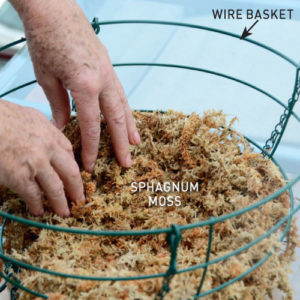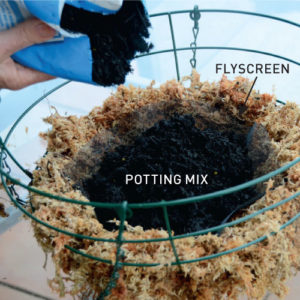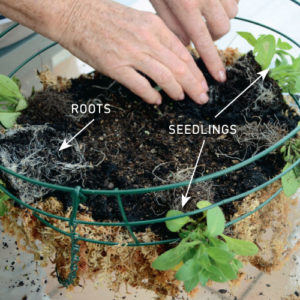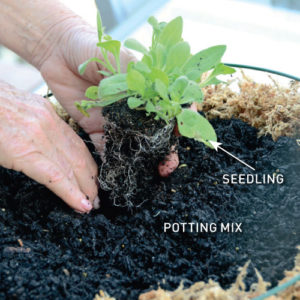How To Create A Hanging Basket Display
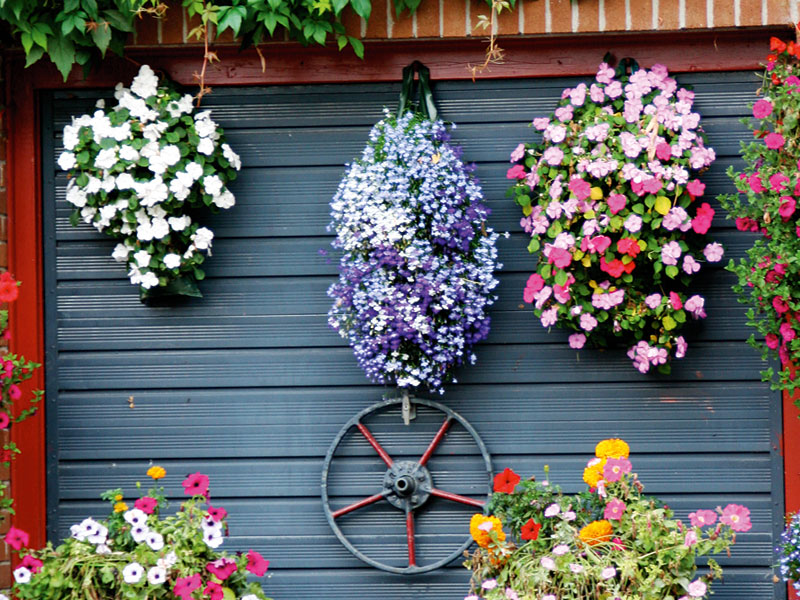
Watch the video: How to pot up hanging baskets
Bring your outdoor area to life with stunning hanging basket displays you can create in just a few hours.
Hanging baskets are a must-have for any backyard or balcony, as they add instant colour. And they’re easy to pot up and care for if you follow a few simple guidelines.
As well as being great space-savers, they’re also aesthetically pleasing, softening the look of bare spots and giving us another opportunity to be surrounded by flowers or greenery.
You can simply suspend baskets from trees to brighten empty areas or hang one over your front door to make a welcoming entrance.
Hanging baskets of trailing flowers on a pergola will transform an outdoor space. And if you use annuals, you can change colours with the seasons.
They add living colour to balconies and big or small yards, and a basket of ferns or attractive foliage will instantly jazz up any unused shady area.
Hanging baskets that fit flat on the wall can turn a surface from boring to beautiful. Arrange them in groups or patterns, just let your creative juices flow, as gardening is an art, after all.
Now’s the time to pot up baskets of summer colour, and if you select the plants carefully, you’ll have stunning displays that last well into autumn.
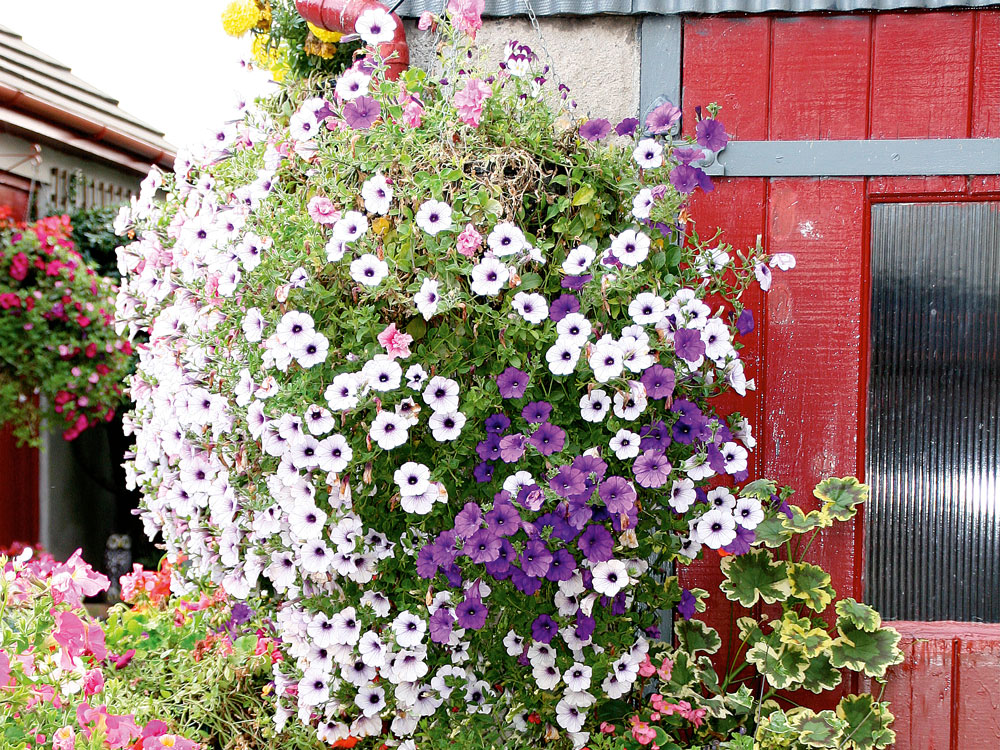
Select a style
There are a range of baskets to choose from, and they can either hang freely or be secured to a wall.
Consider what will suit your space and what theme works well in your yard. You can buy brackets, hooks and chains to make hanging easy.
PLASTIC BASKETS have good water retention and come in different colours to match your outdoor area.
WIRE BASKETS have a coco-fibre or sphagnum moss lining and need more frequent watering than plastic ones. A coco-fibre lining loses moisture through the sides, as well as through the drainage at the base. To retain the moisture, line the inside of the basket with black plastic or use a supermarket bag. Make holes in the base to allow the water to drain, then add potting mix.
DECORATIVE BASKETS can be made from metal or natural products such as rattan, wicker or rope and sisal. They are sometimes lined with plastic to help retain moisture.
Getting the hang of it
The first step in hanging a basket is to determine the microclimate of the area where you want it to go.
Is it a windy spot? Is it in full sun, part shade or full shade? The wind can dry out baskets very quickly, so select a sheltered spot.
When buying baskets, choose ones that are wide and deep, as the larger the basket is, the less you will need to water it.
Use a potting mix that contains a wetting agent, water-holding crystals and a controlled-release fertiliser, or try one developed for hanging baskets.
Plant those that are hung at eye level or slightly below like a traditional pot. Position the tallest plant, or plants, in the centre, then shorter and trailing plants towards the middle and edges.
Baskets hung above eye level don’t need a centre plant and look best with cascading plants that cover the sides of the pot.
TIP You can mix and match different plants or keep it simple and use just the one variety.
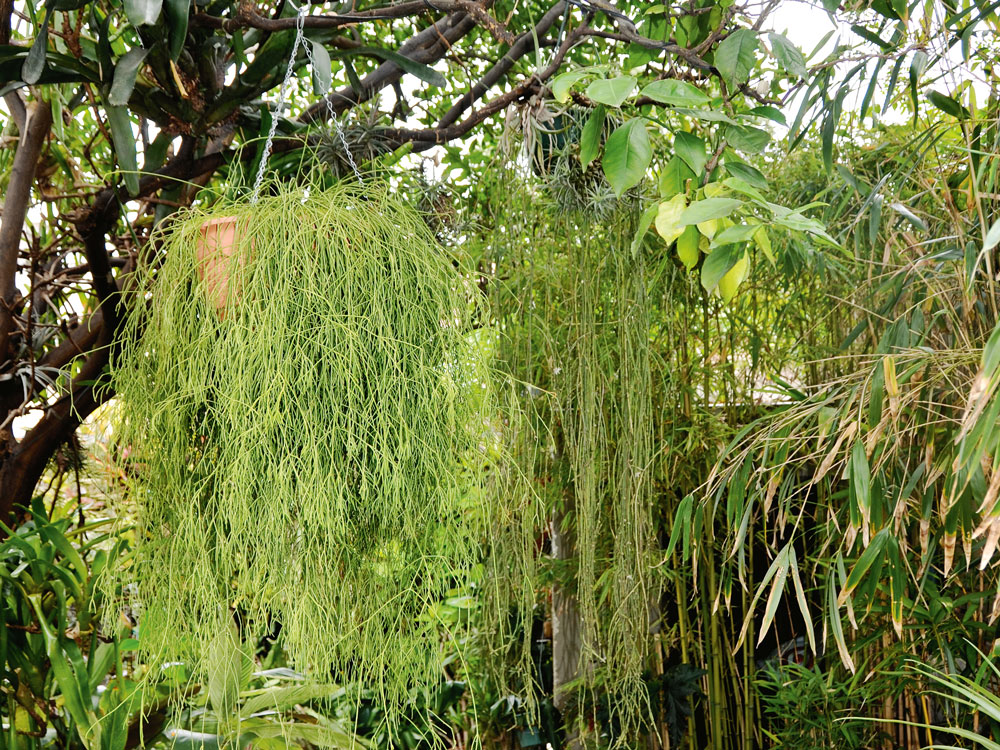
Top trailing plants
Coleus
A basket full of coleus with different coloured foliage is a stunning sight. Leaves come in shades of purple, pink, lime, gold or carmine.
POSITION Shade.
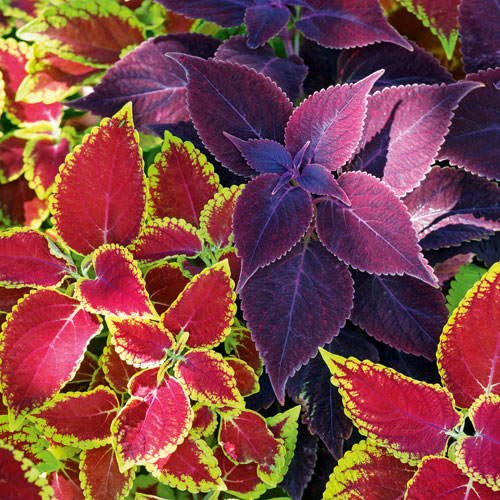
A basket full of coleus with different coloured foliage is a stunning sight. Image: Thinkstock
Calibrachoas
Perfect for hanging balls, calibrachoas are covered in masses of small flowers that are similar to petunias during spring, summer and autumn.
POSITION Sun.
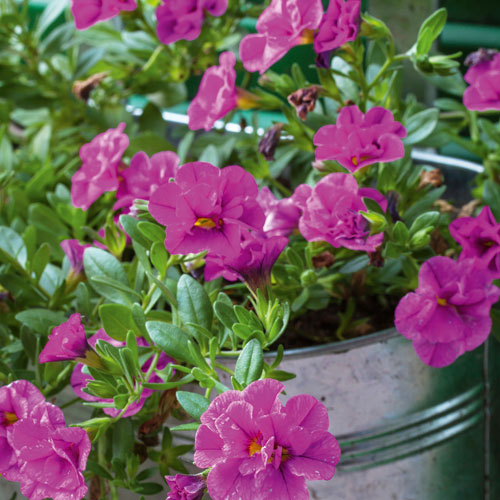
Calibrachoas are covered in masses of small flowers that are similar to petunias during spring. Image: Thinkstock
Ferns
Baskets of ferns can soften shady areas. Fishbone, umbrella, hare’s foot and polypodium ferns are tough and ideal for hanging baskets.
POSITION Shade, morning sun.
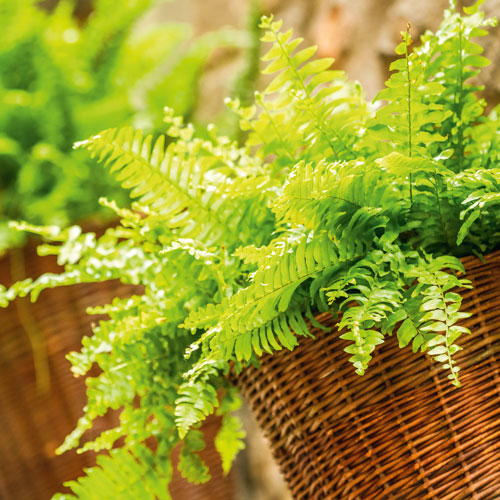
Baskets of ferns can soften shady areas. Image: Thinkstock
Fuschias
With pretty pendant-like flowers, fuchsias are a favourite for hanging baskets. Grow them in plastic pots for the best results.
POSITION Part shade.
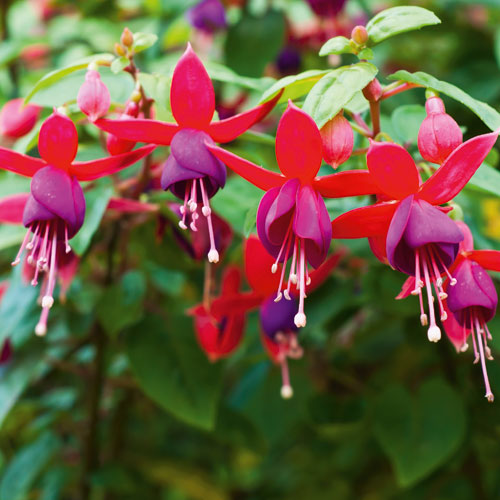
With pretty pendant-like flowers, fuchsias are a favourite for hanging baskets. Image: Thinkstock
Impatiens
Great for brightening up shady spots, impatiens produce masses of flowers for months, and offer a good choice of vibrant flower colours.
POSITION Part or full shade.
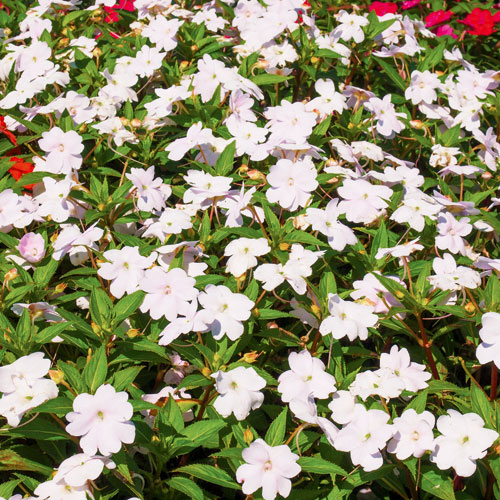
Great for brightening up shady spots, impatiens produce masses of flowers for months. Image: Thinkstock
Pansies
Pansies and violas provide colour during late winter and spring. Grow them en masse in flowering balls or mix them with other plants.
POSITION Sun and part shade.
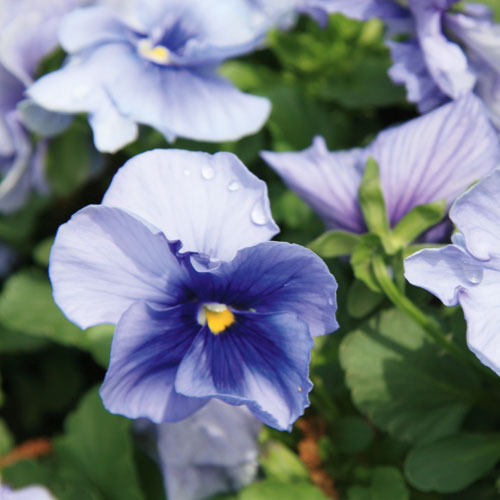
Pansies and violas provide colour during late winter and spring. Image: Thinkstock
Pelargoniums
These plants produce colourful blooms for many months. Ivy-leafed pelargoniums are ideal for baskets with their wonderful trailing habit.
Position Sun.
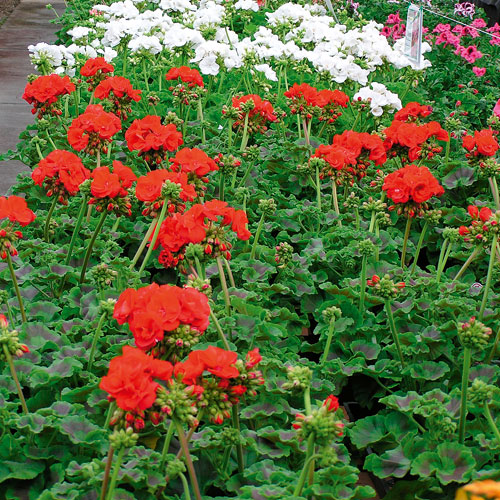
These plants produce colourful blooms for many months
Petunias
Petunias come in a wide range of flower colours, and look striking with just the one plant in a basket or a mix of different shades.
Position Sun.
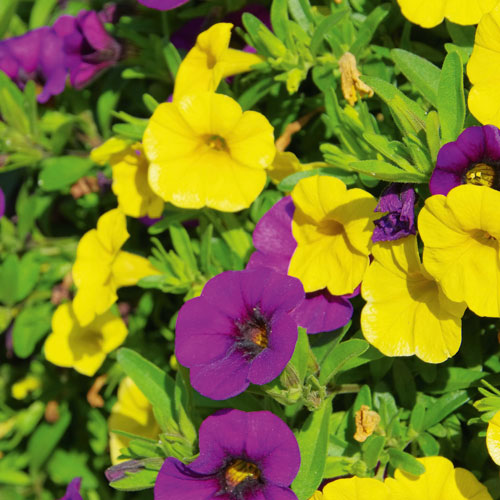
Petunias come in a wide range of flower colours, and look striking in a basket. Image: Thinkstock
Verbenas
Masses of perfumed flowers appear on verbenas throughout spring, summer and autumn. Choose trailing cultivars for single plantings.
Position Sun.
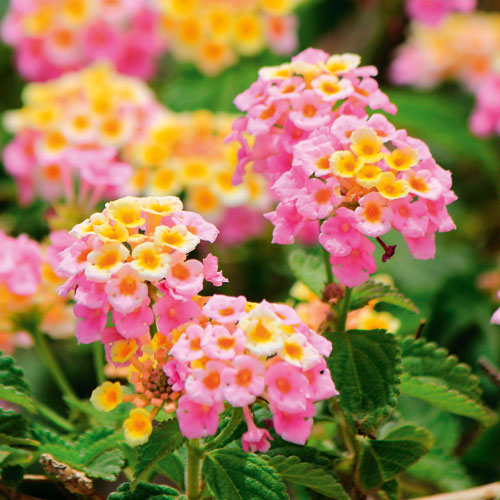
Masses of perfumed flowers appear on verbenas throughout spring, summer and autumn. Image: Thinkstock
Caring for a hanging basket
Give hanging baskets a monthly dose of a complete soluble plant food throughout the growing season and water frequently, especially during summer when they heat up and dry out quickly.
Continual air movement around hanging baskets speeds up water evaporation from the sides of the pots, so soak the top until water begins to drip out of the base.
Water the top and the sides of sphagnum moss and coco-fibre baskets, and mulch with sphagnum moss to help retain water.
TIP A long-handled watering wand will make the job much easier.
How to pot up a wire basket
To create a hanging display, all you need is a large wire basket, enough sphagnum moss to fill it, a piece of flyscreen or plastic, plus premium potting mix and flowering annuals.
If you’re using a coco-fibre basket liner, simply make slits in it with a utility knife and then insert the plants.
To avoid damaging the roots, wrap them loosely in foil before pushing them through the liner. Once you’ve inserted the plant, carefully remove the foil.
TIP Water the plants well before planting them in the basket.
